How To Help Autistic Children Develop Friendship Skills
Building Bridges: The Importance of Social Skills in Autism
Social connections and friendships are essential components of emotional health and well-being for all children. For autistic children, developing these friendships can present unique challenges due to difficulties in social communication, emotional understanding, and behavior. Applied Behavior Analysis (ABA) therapy, along with targeted social skills training (SST), offers scientifically validated approaches to support autistic children in acquiring and generalizing friendship skills. This article explores how ABA and related methods help nurture social competencies, enabling autistic children to form meaningful relationships and enhance their quality of life.
Understanding Applied Behavior Analysis (ABA) Therapy and Its Role in Autism Support
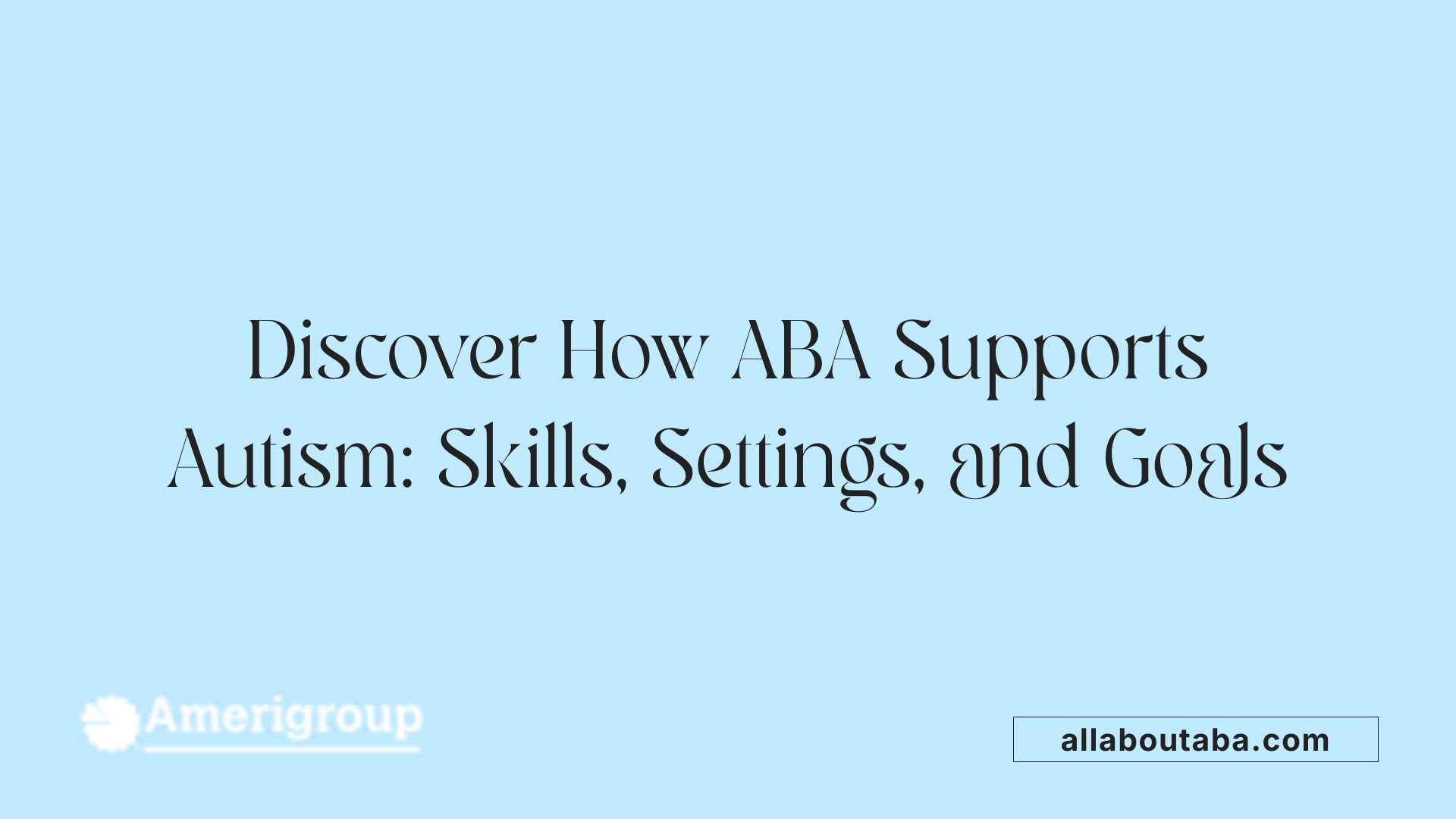
What is Applied Behavior Analysis (ABA) therapy and how is it used to support individuals with autism?
Applied Behavior Analysis (ABA) therapy is a scientifically proven approach designed to help individuals with autism spectrum disorder (ASD) develop essential skills. It focuses on encouraging positive behaviors and reducing challenges by applying learning principles such as reinforcement and behavior modification techniques.
ABA therapy is individualized, meaning programs are tailored for each child's unique strengths and needs. Professionals carefully assess a child's abilities and develop structured plans that break down complex social, communicative, and daily living skills into manageable steps.
How does ABA use individualization and structured methods?
ABA employs structured teaching methods like Discrete Trial Training (DTT), which breaks skills into small, teachable components, taught through repetition and reinforcement. Naturalistic Environment Teaching (NET) is also used to encourage skill practice during everyday routines and activities.
Positive reinforcement motivates children to practice social skills such as eye contact, turn-taking, sharing, and recognizing facial expressions. Therapists frequently use role-playing, social stories, and video modeling to develop both verbal and non-verbal communication abilities.
In what settings and delivery formats is ABA provided?
ABA therapy can be delivered in various environments including homes, schools, clinics, and community settings. Programs may consist of one-on-one instruction or group activities that promote social interaction and teamwork.
Structured sessions are common, but naturalistic approaches encourage learning during real-life situations. Collaboration with parents, teachers, and caregivers is fundamental to generalize learned skills across settings and sustain positive behavioral outcomes.
What are the targeted goals for social, communicative, and daily living skills in ABA?
ABA aims to improve a wide range of skills crucial for everyday success. Social skills development includes teaching eye contact, joint attention, turn-taking, conversational reciprocity, and emotional regulation.
Communication goals focus on expanding vocabulary, encouraging use of alternative communication methods like PECS and AAC devices, and teaching appropriate body language and facial expressions.
Daily living skills training covers self-presentation, patience, cooperative play, problem-solving, and conflict resolution. ABA also emphasizes emotional understanding and empathy by helping children identify emotions through pictures and scenarios.
These improvements support better relationships, increased inclusion, academic success, and enhance long-term quality of life for children with autism.
Who Provides ABA Therapy? The Roles Behind Successful Intervention
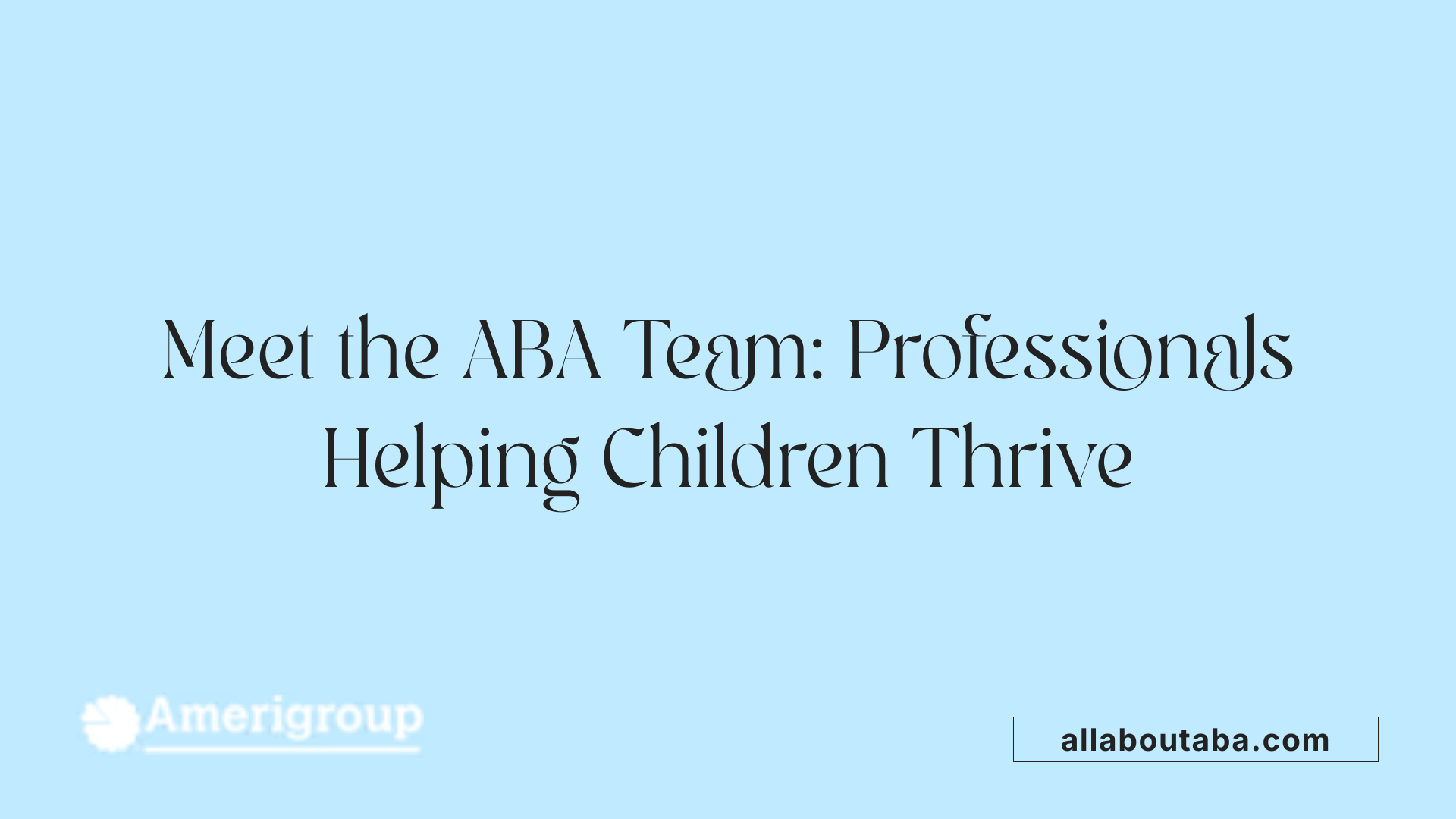
Who typically provides ABA therapy for individuals with autism?
ABA therapy for individuals with autism is delivered by a multidisciplinary team of trained professionals. The centerpiece of this team is the Board-Certified Behavior Analyst (BCBA), a master's level professional licensed to assess, develop, and supervise individualized treatment plans. BCBAs hold the responsibility of evaluating each child's unique needs and tailoring the therapy accordingly.
Licensed Behavior Analysts (LBAs) and Certified Behavior Analyst Assistants (CBAAs) support BCBAs by assisting in supervision and helping with program implementation. They work closely with the lead analyst to maintain fidelity to treatment objectives.
The critical frontline role is filled by Registered Behavior Technicians (RBTs). These certified paraprofessionals work directly with the child, conducting daily ABA sessions, delivering interventions, and collecting data under the supervision of a BCBA or LBA. Their hands-on involvement ensures therapy is applied consistently and effectively.
Collaborative nature of treatment teams
ABA therapy thrives on teamwork. BCBAs design and adjust treatment plans based on collected data and ongoing assessments. LBAs and CBAAs provide additional clinical support, ensuring plans are executed competently. RBTs implement daily interventions and engage with the child in structured environments.
Moreover, these professionals collaborate closely with parents, caregivers, educators, and other stakeholders to promote generalization of skills across home, school, and community settings. Frequent communication and coordination among all parties enhance treatment outcomes and support long-term progress.
Through this structured collaborative approach, ABA therapy delivers personalized, evidence-based interventions fostering social, communicative, and daily living skill development in children with autism.
Key Behavioral Principles in ABA: Foundations for Teaching Friendship Skills
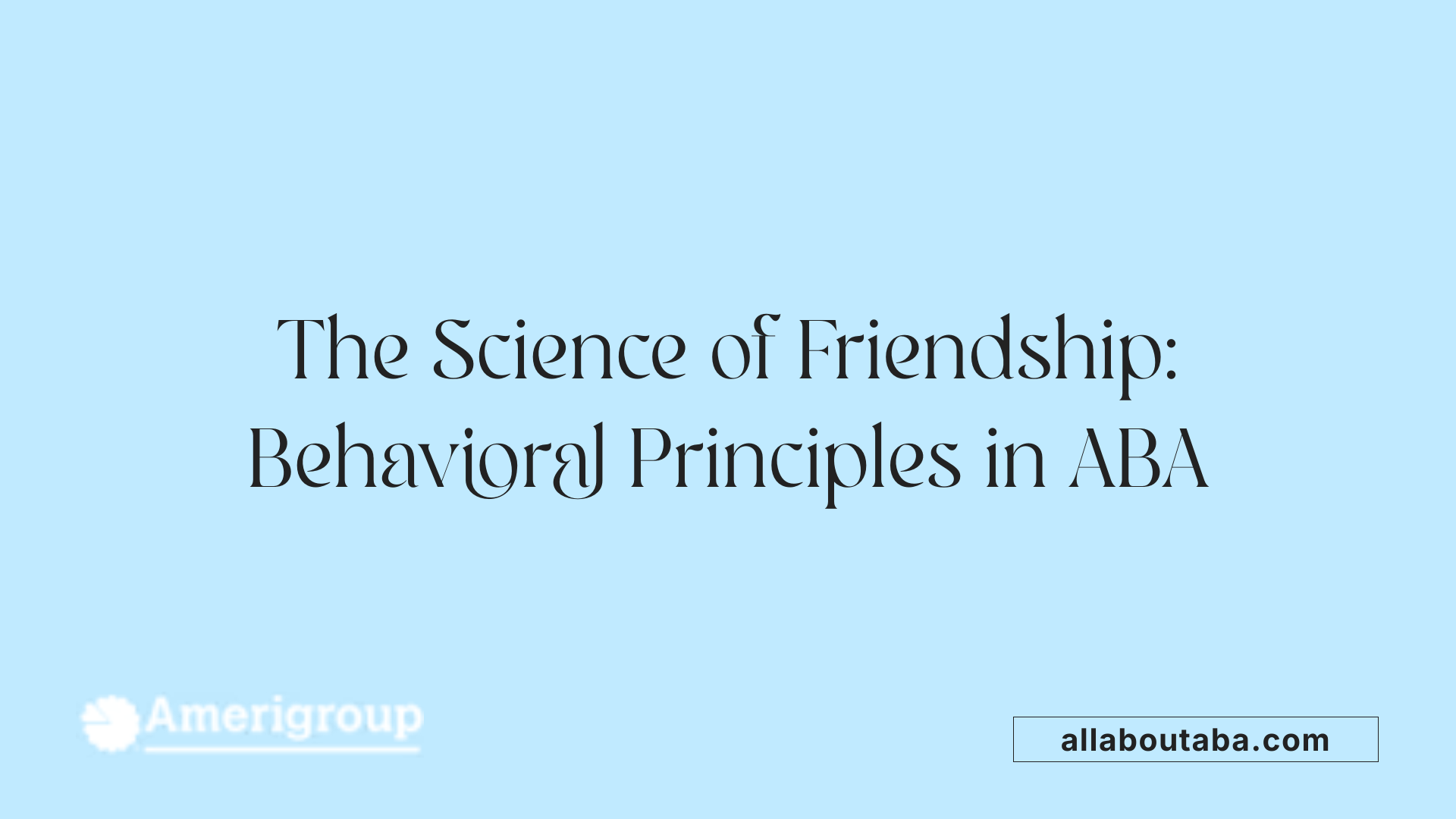
What are the key principles behind behavioral analysis used in autism therapy?
Behavioral analysis in autism therapy, especially Applied Behavior Analysis (ABA), is based on understanding how behaviors occur and why, focusing on their functions such as gaining attention, accessing preferred items, or escaping difficult situations. The approach uses reinforcement and consequence strategies to encourage positive behaviors and discourage undesirable ones.
Reinforcement and consequence strategies
ABA applies positive reinforcement to increase desired social behaviors by rewarding appropriate actions like eye contact, turn-taking, and sharing. Conversely, consequence strategies help reduce challenging behaviors by consistently responding in ways that do not reinforce them.
Functions of behavior
Identifying the function of a behavior—whether to seek attention, escape tasks, or fulfill sensory needs—is crucial. This understanding guides the selection of interventions tailored to each child's specific motivations.
Techniques such as prompting, shaping, task analysis
ABA uses prompting to guide the child toward correct responses, shaping to reinforce successive approximations of a skill, and task analysis to break down complex social skills into smaller, teachable steps. These methods facilitate mastery of behaviors like initiating conversations or managing conflicts.
Focus on observable, socially significant behaviors
The therapy targets behaviors that are meaningful in social contexts and vital for effective communication and relationships, such as recognizing facial expressions, emotional regulation, and cooperative play.
Generalization and maintenance
ABA stresses practicing skills across multiple environments—home, school, community—to ensure generalization. Ongoing reinforcement and involvement from caregivers and therapists maintain progress and encourage independent use of social skills.
This scientific, individualized, and systematic framework enables children with autism to build friendship skills effectively through structured teaching, real-life practice, and continuous support.
Effectiveness of ABA Therapy in Social Skills Acquisition for Autistic Children
How effective is ABA therapy for individuals with autism, and what outcomes can be expected?
Applied Behavioral Analysis (ABA) is widely recognized as an effective, evidence-based intervention for children with autism. Research consistently shows that ABA significantly improves social interaction, communication, and adaptive daily living skills. These benefits are especially notable when ABA is started early and delivered through individualized, structured programs that break complex behaviors into manageable steps.
Research evidence on ABA outcomes
Various studies and meta-analyses confirm the positive impact of ABA on social and communicative behaviors. Structured ABA sessions lead to measurable gains in eye contact, turn-taking, joint attention, and emotional recognition. Techniques like Discrete Trial Training (DTT), video modeling, and natural environment teaching help teach these skills efficiently. The use of positive reinforcement motivates children to practice and sustain new social behaviors.
Improvements in social, communicative, adaptive skills
ABA therapy targets key life skills, including patience, understanding facial expressions, emotional regulation, and problem-solving. Children demonstrate increased competence in cooperative play, reciprocal conversations, and handling conflict after ABA intervention. Communication skills improve with vocabulary expansion and alternative systems like AAC devices. Adaptive behavior, such as self-presentation and independent living skills, also benefits from targeted ABA programs.
Importance of early, individualized intervention
ABA's success heavily relies on tailoring treatment to each child's unique strengths and challenges. Early intervention captures critical developmental windows, maximizing learning potential. Certified therapists develop personalized plans that incorporate role-playing, social stories, and visual aids, which are practical and engaging for autistic children.
Impact of parental involvement and generalization
Parental participation enhances the effectiveness of ABA by reinforcing skills at home and facilitating generalization across different environments such as school and community settings. Parents use visual supports, model appropriate behaviors, and provide children with structured social opportunities. This consistent reinforcement helps maintain and broaden behavioral gains, increasing the likelihood of lasting improvements.
ABA therapy's research-backed methods promote improved relationships, better communication, and greater inclusion, setting a foundation for academic success and increased quality of life for autistic children.
Social Skills Training (SST) as a Complement to ABA Therapy
How is SST Delivered and in What Settings?
Social Skills Training (SST) can be administered in various formats, including individual sessions and group settings. These sessions take place in environments such as clinical centers, schools, and community venues, offering flexibility to meet diverse needs. The duration of SST interventions typically ranges from a few weeks to several months, adapting to the intensity required by each child.
What Are the Measured Benefits and Limitations of SST?
Research shows SST yields small to moderate improvements in social communication, reciprocity, and joint attention among children with autism spectrum disorder (ASD). Meta-analyses report effect sizes from 0.28 to 0.60, indicating meaningful but varied benefits. However, some standardized tools like the Social Responsiveness Scale (SRS) have not shown statistically significant enhancements across studies, possibly due to differences in study designs and participant characteristics.
Why Is Individual Tailoring Important?
The effectiveness of SST greatly depends on customizing interventions to each child's unique profile. Factors such as the type of social skills targeted, the specific needs of the participant, and how consistently the program is implemented influence outcomes. Tailoring ensures that therapy addresses individual strengths and challenges, thereby maximizing improvement.
How Can Technology Enhance SST?
Integrating technology-based approaches into SST, such as video modeling or computer-assisted programs, holds promise for boosting engagement and skill acquisition. These methods leverage visual learning strengths common in children with ASD, leading to improved understanding and generalization of social behaviors.
What Is SST’s Role Within a Broader Treatment Plan?
While SST is valuable for developing social competencies, it is most effective when incorporated as part of a comprehensive, individualized treatment plan rather than as a standalone intervention. Combining SST with approaches like Applied Behavior Analysis (ABA) ensures a holistic strategy that supports communication, daily living skills, and emotional regulation alongside social development.
Practical ABA Techniques to Build Friendship Skills
What is Discrete Trial Training (DTT)?
Discrete Trial Training is a structured ABA method that breaks down social skills into small, manageable steps. Each skill is taught using clear instructions, prompts, and reinforcement. For example, a child may practice making eye contact or taking turns one step at a time, receiving praise or rewards for each successful attempt.
How does Natural Environment Teaching (NET) support friendships?
NET teaches social skills within everyday routines and natural settings, like home or school. This approach encourages children to apply skills such as sharing or initiating conversations during playtime or group activities. Learning in real-life contexts helps children generalize these behaviors to new situations.
What roles do role-playing and social stories play?
Role-playing provides children with opportunities to practice social scenarios like greeting a friend or resolving conflicts through guided repetition. Social stories offer simple, illustrated narratives that explain social cues and expectations, helping children understand and remember appropriate behaviors.
How does video modeling improve non-verbal communication?
Video modeling leverages children's strength in visual learning by showing videos demonstrating gestures, facial expressions, and body language. Children watch and then imitate these behaviors, enhancing skills like recognizing emotions and responding appropriately without relying solely on verbal cues.
What is peer-mediated instruction?
Peer-mediated instruction involves teaching social skills through interactions with typically developing peers. Structured group activities, cooperative games, and guided discussions allow children with autism to practice and reinforce skills such as teamwork, reciprocal communication, and turn-taking in supportive, natural settings.
The Role of Group-Based ABA Interventions in Social Development
How do group activities support real-time social practice in ABA?
Group-based ABA interventions provide children with autism the opportunity to engage in social interactions within a controlled and supportive environment. Through structured group activities, children participate in real-time social exchanges that promote the practice of vital skills such as eye contact, conversational turn-taking, and sharing. These settings mimic natural social contexts, encouraging spontaneous use of learned behaviors which is crucial for general socialization.
What is the significance of cooperative games and teamwork in these interventions?
Cooperative games form a cornerstone of group ABA interventions by fostering teamwork, communication, and social reciprocity. Engaging children in cooperative play encourages them to negotiate roles, resolve conflicts, and collaborate toward shared goals. This not only enhances individual social skills but also cultivates a sense of belonging and positive peer relationships.
How is skill generalization facilitated across various environments?
Effective group ABA programs emphasize generalizing social skills beyond the therapy setting to everyday environments, including home, school, and community. Therapists collaborate with caregivers and educators to create consistent opportunities for children to practice and reinforce skills. Use of naturalistic teaching strategies during familiar routines and settings strengthens the retention and adaptability of social behaviors.
What role do caregivers and teachers play in supporting group-based ABA social skills training?
Caregiver and teacher involvement is critical to maximize intervention outcomes. They help maintain consistency by reinforcing targeted skills, modeling appropriate social behaviors, and providing feedback across different contexts. This partnership ensures that children receive continuous support and opportunities for social engagement outside of therapy sessions, enhancing overall effectiveness.
| Aspect | Description | Benefits |
|---|---|---|
| Group Activities | Real-time social practice through structured interaction | Improves spontaneous social use |
| Cooperative Games | Team-based play encouraging collaboration and negotiation | Builds teamwork and peer relationships |
| Skill Generalization | Extending learned skills to home, school, community | Promotes adaptability and long-term skill use |
| Caregiver & Teacher Support | Collaboration to reinforce and model behaviors | Ensures consistency and maximizes skill retention |
Supporting Friendship Skills at Home: Strategies for Parents and Caregivers
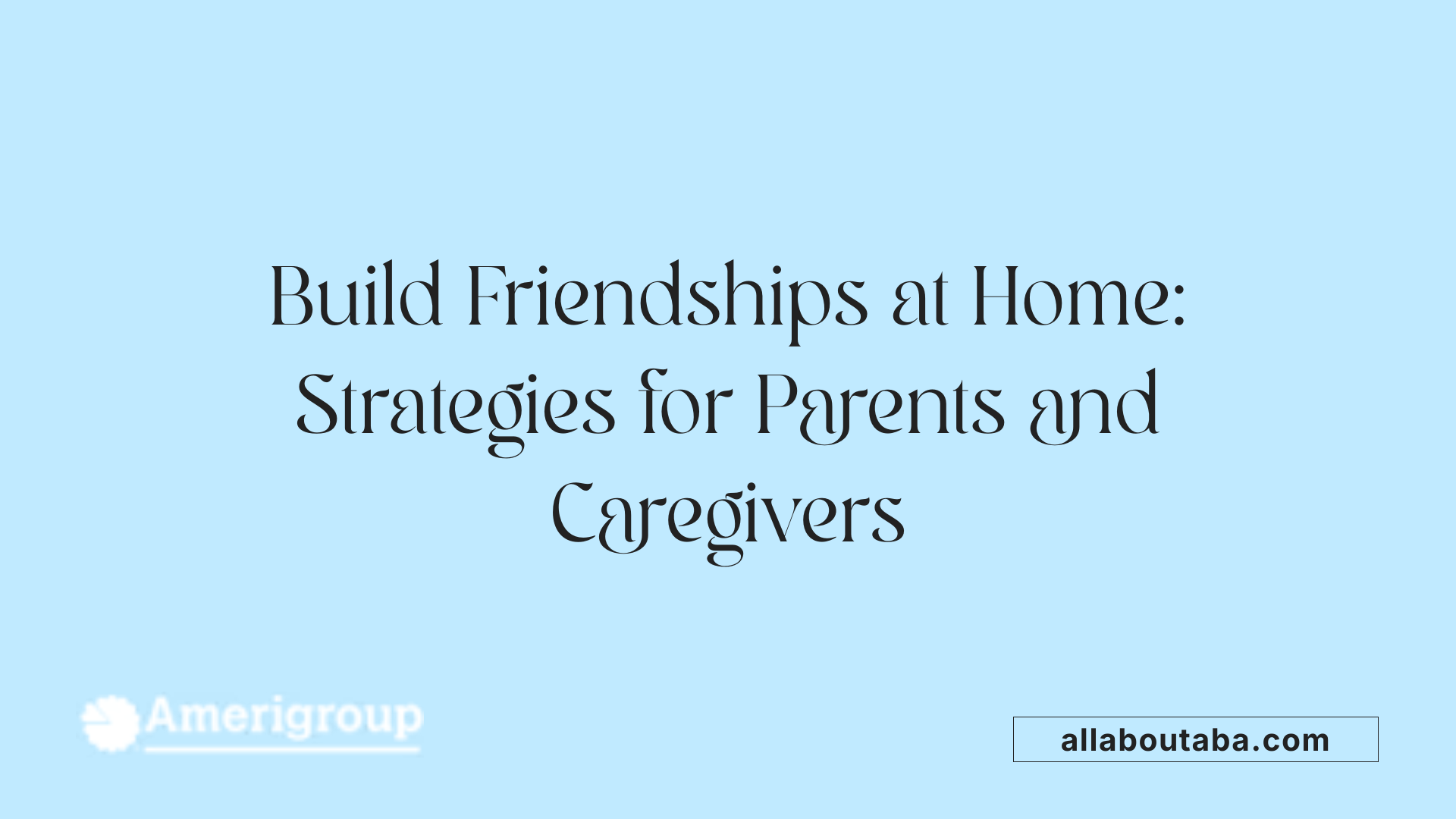
Modeling Behaviors
Parents and caregivers play a vital role in teaching friendship skills by modeling appropriate social behaviors themselves. Demonstrating polite greetings, turn-taking in conversations, and sharing can provide clear examples for children to imitate. Consistent modeling helps children understand social expectations and practice these behaviors in everyday interactions.
Visual Supports and Social Stories
Using visual supports such as charts, pictures, and social stories can clarify social concepts and routines. Social stories outline specific situations, expected behaviors, and emotional responses, helping children prepare for and navigate social interactions. Visual cues reinforce learning by making abstract social rules more concrete and accessible.
Arranging Peer Playtimes and Group Activities
Organizing regular peer playdates or group activities gives children practical opportunities to apply social skills in real-world settings. Structured play encourages cooperative behavior, turn-taking, and joint attention. Through these interactions, children learn to initiate conversations, negotiate sharing, and build friendships.
Encouraging Emotional Expression and Empathy
Helping children recognize and express their own emotions, as well as understand others' feelings, is essential for relationship building. Parents can use pictures, role-playing, and discussions to teach emotional vocabulary and empathy. Supporting emotional regulation strategies empowers children to respond appropriately during social exchanges.
Consistent Reinforcement
Reinforcing positive social behaviors at home, such as praising efforts, celebrating successes, and providing gentle corrections, strengthens skill retention. Consistent reinforcement across settings improves generalization and helps sustain friendship skills.
What Should Parents Consider When Choosing an ABA Therapy Provider or Program?
When selecting an ABA provider, parents should ensure staff members are properly qualified and experienced with autism. It's important to choose programs that are individualized and utilize evidence-based approaches emphasizing communication, socialization, and daily living skills. Parents should inquire about data collection, progress tracking, and methods for helping children generalize skills across settings. Observing therapy sessions and understanding safety and ethical standards help assess program quality. Selecting a provider committed to family collaboration and respectful, data-driven practices is critical for effective ABA therapy.
This multifaceted approach combining home-based strategies and professional ABA support creates a strong foundation for children with autism to build and maintain meaningful friendships.
Emotional Understanding and Conflict Resolution in ABA Social Skills Programs
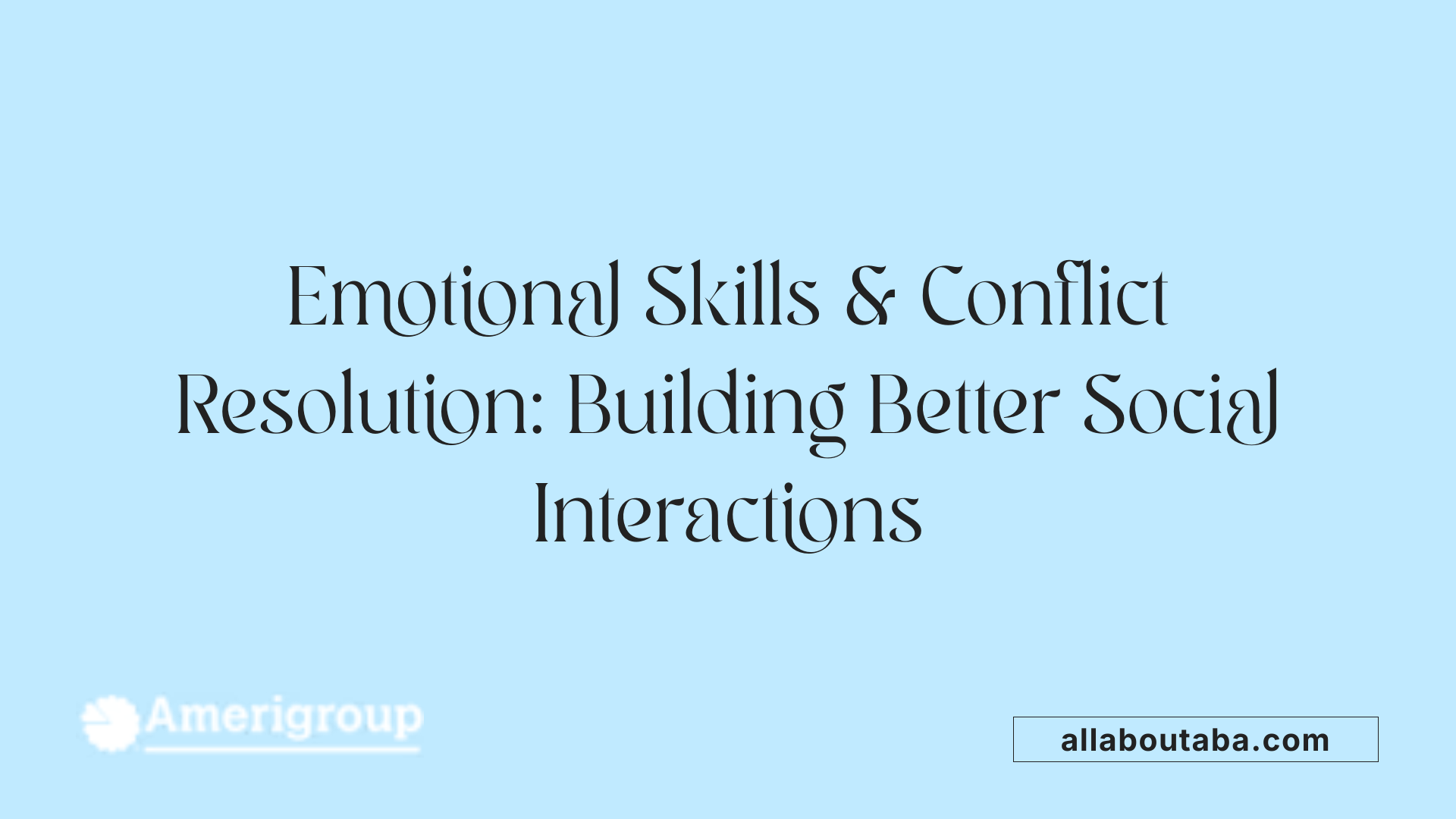
Teaching Emotion Recognition with Pictures and Scenarios
ABA programs emphasize helping children with autism recognize and understand emotions by using visual aids such as pictures and everyday scenarios. These tools make abstract feelings more concrete, enabling children to identify emotions in themselves and others accurately.
Practicing Empathy and Self-Regulation
Alongside emotion recognition, children are guided to practice empathy through structured exercises. They learn to respond sensitively to others' feelings and develop self-regulation strategies that help manage their own emotional responses effectively.
Role-Playing Conflict Negotiation and Problem-Solving
Role-playing is a core technique in ABA social skills training, where children act out conflict situations to learn negotiation and problem-solving skills. This hands-on approach encourages understanding of perspectives, teaches compromise, and supports constructive resolution of disagreements.
Reinforcement of Appropriate Social Responses
Positive reinforcement is employed to encourage the consistent use of newly learned emotional and conflict resolution skills. Therapists and caregivers praise and reward appropriate social responses, helping children internalize these behaviors for use in real-life interactions.
Long-Term Benefits of Early Social Skills Development Through ABA
How Does Early Social Skills Development Through ABA Improve Relationships and Inclusion?
Early social skills training in ABA helps children with autism build meaningful relationships by teaching them essential behaviors like eye contact, turn-taking, and recognizing facial expressions. These skills foster better communication and cooperation, making it easier for children to connect with peers. Improved social interactions often lead to greater inclusion in school, community activities, and social groups.
In What Ways Does ABA Prepare Children for Academic and Employment Success?
ABA enhances communication and adaptive behaviors critical for academic achievement, such as following instructions and participating in group activities. Social skills groups and school-based ABA services provide natural settings for practicing teamwork and conversational skills. Over time, these skills contribute to better academic performance and improve career readiness by laying a foundation for effective workplace communication and collaboration.
How Does ABA Help Build Emotional Resilience and Self-Esteem?
ABA therapy includes teaching emotion recognition and self-regulation, which equips children with strategies to manage stress and social challenges. These abilities promote emotional resilience, enabling children to cope better with setbacks. Positive reinforcement and successful social interactions boost self-esteem, fostering increased confidence in social and daily living situations.
What Role Does ABA Play in Enhancing Communication and Adaptive Behaviors?
ABA uses evidence-based techniques such as Discrete Trial Training and Natural Environment Teaching to break down complex communication skills into manageable steps. It supports expanding vocabulary and alternative communication methods like PECS or AAC devices. Teaching appropriate body language and facial expressions further refines communication. These improvements enhance adaptive behaviors across multiple environments, supporting greater independence and social functioning.
| Benefit Area | Description | ABA Techniques and Focus |
|---|---|---|
| Improved Relationships | Builds positive peer connections and social inclusion | Eye contact, turn-taking, role-play, social stories |
| Academic and Employment Readiness | Prepares for school and workplace engagement | Group activities, communication skills, adaptive behavior training |
| Emotional Resilience & Self-Esteem | Develops coping skills and confidence | Emotion recognition, self-regulation, positive reinforcement |
| Communication & Adaptive Behaviors | Enhances verbal and non-verbal communication for independence | DTT, NET, PECS, video modeling, social problem-solving |
Pathways to Friendship: The Promise of ABA and Beyond
Fostering friendship skills in autistic children requires a thoughtful, individualized approach grounded in evidence-based practices like Applied Behavior Analysis therapy. ABA’s structured methods, combined with social skills training and meaningful parent involvement, build core competencies such as communication, emotional understanding, and social reciprocity. The integration of practical teaching techniques including role-playing, video modeling, and naturalistic learning ensures that children not only learn skills but generalize them to real-life contexts. Early intervention and consistent support across environments cultivate social confidence, ultimately enriching autistic children’s relationships and quality of life. Families and professionals working together can unlock the social potential inherent in every child, paving the way for genuine friendships and lasting inclusion.
References
- The effectiveness of applied behavior analysis program ...
- Effectiveness of social skills training interventions for ...
- Developing Social Skills Through ABA Therapy for Autism
- Social Skills through ABA Therapy for Autistic Children
- Social Skills: Helping Children Build Meaningful Connections
- ABA Therapy for Enhancing Social Skills in Children with Autism
- The 7 Dimensions & Core Principles of ABA
Other articles
Recent articles

The Role Of Visual Arts In Autism Communication Development

How To Address Tactile Defensiveness In Autism

Best Practices For Telehealth Autism Therapy

How To Help Autistic Children Develop Friendship Skills

How Schools Can Support Autistic Students In Career Prep

Best Strategies For Autism-Friendly Event Planning

Understanding Noncontingent Reinforcement In Autism Behavior Plans

How Drama Therapy Benefits Autistic Individuals

Best Practices For Autism-Friendly Fitness And Recreation Centers

Best Ways To Promote Healthy Social Media Use For Autistic Teens

How To Help Autistic Children Cope With Public Speaking

Autism And Strategies For Managing Unexpected Changes

Best Podcasts About Autism For Parents And Educators

Autism And The Impact Of Seasonal Changes On Behavior

The Role Of Diet In Managing Co-Occurring Conditions With Autism

Sleep Challenges In Autism And Practical Solutions

Best Ways To Build Daily Routines For Autistic Children

Best Practices For Supporting Autistic Entrepreneurs

Autism And Strategies For Navigating Large Social Gatherings

Adaptive Sports And Recreational Activities For People With Autism

Autism And The Benefits Of Story-Based Learning Activities

Understanding The Role Of Play In Autism Development

Autism And The Impact Of Environmental Noise On Learning

How To Create Autism-Friendly Community Spaces

Autism And Chronic Health Conditions: What To Know

The Role Of Care Managers In Autism Life Planning

How To Teach Social Boundaries To Autistic Children

How Autistic Individuals Experience Empathy Differently

How To Support Autistic Employees In Remote Work Settings

Autism And The Relationship Between Motor Skills And Learning

How To Create Community Resource Guides For Autism Families

How To Teach Daily Living Skills To Autistic Teens

Autism And The Impact Of Mind-Body Practices On Stress Reduction

Autism And The Benefits Of Outdoor Group Activities

How To Create Autism-Friendly Sensory Paths In Schools

Best Practices For Autism-Friendly Park And Recreation Areas

Autism And Strategies For Reducing School Refusal

Supporting Autistic Individuals In Public Speaking

The Role Of Diet In Managing Autism Symptoms

The Benefits Of Gardening Clubs For Autism Social Development

How To Prepare Autistic Children For Dental Visits

Autism And Employment: Career Paths That Work

Best Practices For Autism-Friendly Hotels And Lodging

The Impact Of Screen Time On Autism Development

Autism Screening Tools For Early Childhood

The Role Of Physical Exercise In Autism Therapy

Best Strategies For Supporting Autistic College Students

The Role Of Technology In Autism Early Detection

Sensory-Friendly Classroom Design Ideas For Autistic Students

The Role Of Speech Therapy In Building Social Communication Skills

Best Strategies For Handling Autistic Burnout In Adults

Autism And The Importance Of Predictability In Routine

Autism And Peer Education: Teaching Acceptance In Schools

Best Practices For Sensory-Friendly Libraries And Reading Rooms

Self-Advocacy Skills For Autistic Adults

The Role Of Technology In Autism Peer Communication

Promoting Physical Activity In Children With Autism

How To Prepare Autistic Children For Medical Procedures

The Role Of Social Media In Autism Advocacy And Awareness

The Impact Of Sensory Rooms In Public Facilities For Autism

How To Create An Autism-Friendly Holiday Celebration

Best Practices For Inclusive Education For Autistic Students

Autism And Mental Health: Recognizing Signs Of Distress

Best Practices For Sensory-Friendly Waiting Rooms

The Role Of Teachers In Early Autism Red Flag Identification

Autism-Friendly Housing Design Features

Autism-Friendly Housing Design Features

How Environmental Modifications Improve Autism Outcomes

Autism And Technology-Based Learning Tools

Supporting Autistic Children Through Changes In Routine

The Link Between Autism And Working Memory Challenges

Best Practices For Autism-Friendly Cooking Classes

Autism And The Benefits Of Structured Music Lessons

Best Books To Teach Kids About Autism Acceptance

Sensory Diets And Their Benefits For Autism Management

How To Prepare Autistic Teens For Driver’s Education

How To Teach Autistic Teens About Healthy Relationships
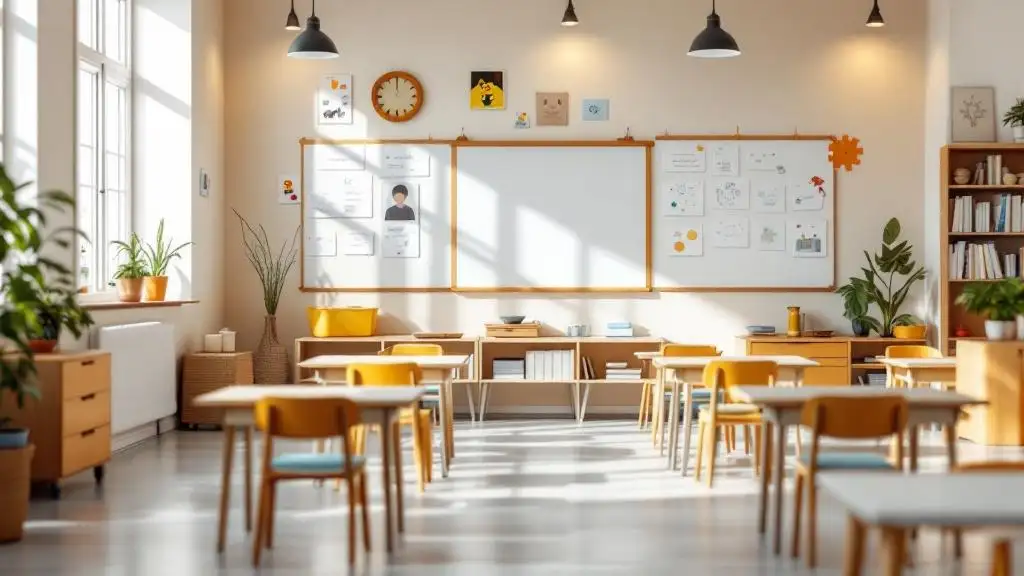
The Role Of Visual Prompts In Building Daily Habits For Autism

Addressing Sleep Regression In Children With Autism
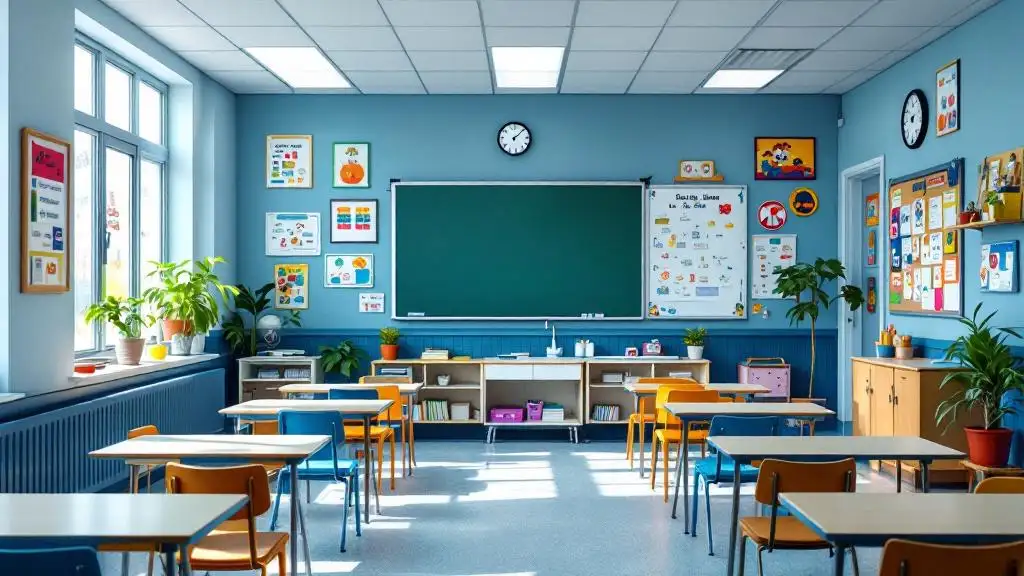
Understanding Social Stories And How They Help Autistic Children

Navigating Insurance Coverage For Autism Therapy Services

How To Prepare Autistic Adults For Independent Travel

Supporting Autistic Individuals In Volunteer Work

How Mindfulness Practices Can Support Autism Well-Being

Understanding Hyperfocus And Special Interests In Autism

Understanding Stimming As A Self-Regulation Tool

Sensory-Based Interventions For Autism At Home

Best Ways To Introduce Self-Advocacy In Autistic Teens

Best Ways To Support Autistic Employees In Customer Service Roles

Best Practices For Autism-Friendly Volunteer Programs
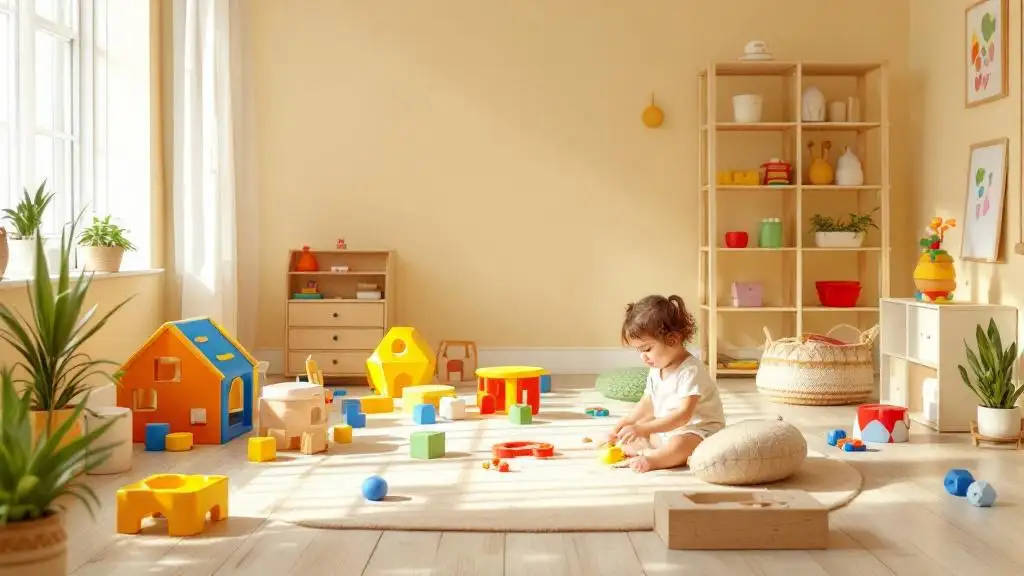
Autism And The Benefits Of Sensory Play For Emotional Growth
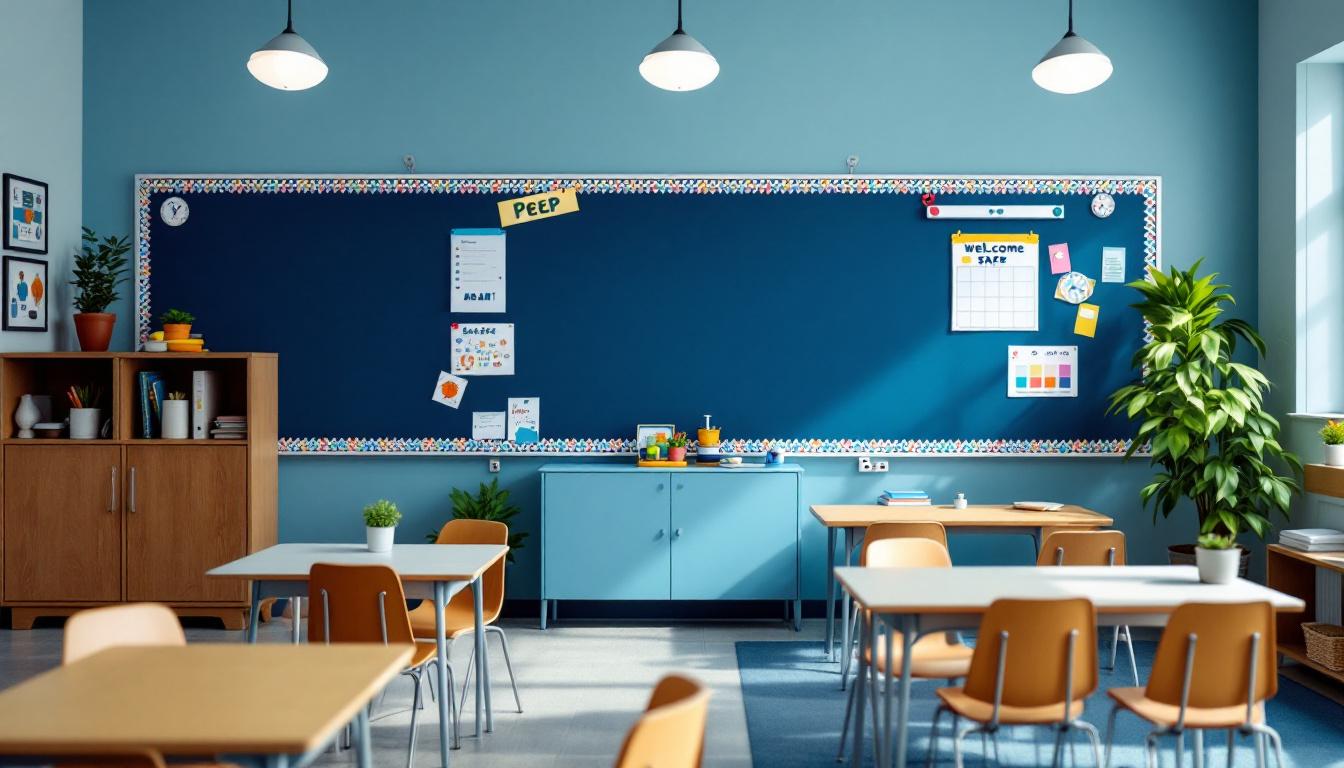
Autism And Strategies For Building Peer Relationships

Understanding How Autism Affects Memory Processing

Autism And Strategies For Building Coping Skills In Teens

The Role Of Parent Training In Autism Intervention Programs

Autism-Friendly Workplace Accommodations

Using Visual Timers For Autism Time Management

What Is ABA Therapy?

Autism and Sleep

Do Plastic Toys Cause Autism?
We’re All About You, Your Family, and Your Child

